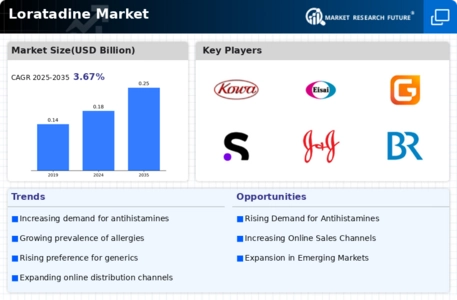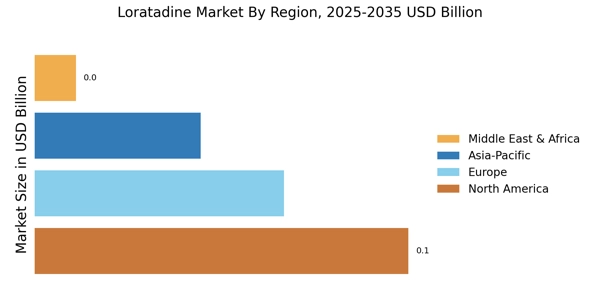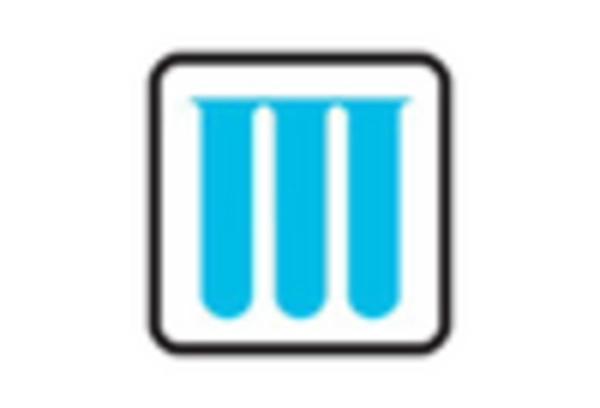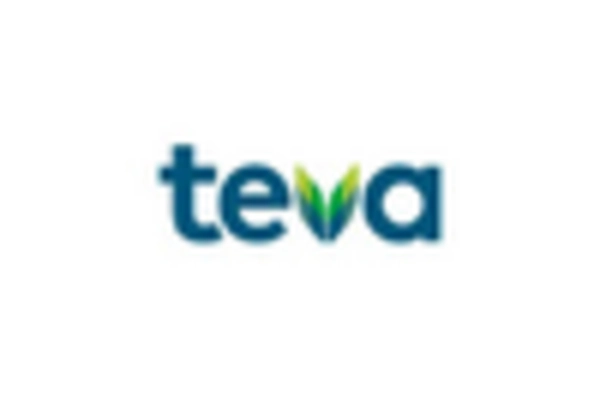Increasing Allergy Prevalence
The rising incidence of allergic conditions, such as allergic rhinitis and urticaria, appears to be a primary driver for the Loratadine Market. According to health statistics, the prevalence of allergies has been steadily increasing, affecting millions of individuals worldwide. This trend is likely to boost the demand for effective antihistamines like Loratadine, which is known for its non-drowsy formulation. As more people seek relief from allergy symptoms, the market for Loratadine is expected to expand. The growing awareness of allergy management and the importance of timely treatment further contribute to this trend, indicating a robust future for the Loratadine Market.
Rising Awareness of Allergies
There is a notable increase in public awareness regarding allergies and their management, which is likely to influence the Loratadine Market positively. Educational campaigns and health initiatives have contributed to a better understanding of allergic conditions, leading to a higher demand for effective treatments. As individuals become more informed about the symptoms and consequences of allergies, they are more inclined to seek appropriate medications like Loratadine. This heightened awareness is expected to drive market growth, as consumers actively look for reliable solutions to alleviate their allergy symptoms, thereby enhancing the overall landscape of the Loratadine Market.
Shift Towards Self-Medication
The trend towards self-medication is gaining momentum, particularly in the context of the Loratadine Market. Consumers are increasingly opting for over-the-counter antihistamines to manage their allergy symptoms without the need for a prescription. This shift is driven by the desire for convenience and immediate relief, as well as the growing availability of Loratadine in pharmacies and retail outlets. Market data suggests that the self-medication segment is projected to grow significantly, as individuals become more proactive in managing their health. This trend not only enhances the accessibility of Loratadine but also positions it as a preferred choice among consumers, thereby driving the Loratadine Market forward.
Regulatory Support for Antihistamines
Regulatory support for antihistamines, including Loratadine, is a significant driver for the Loratadine Market. Regulatory bodies are increasingly recognizing the importance of effective allergy management and are streamlining the approval processes for new formulations and indications. This supportive regulatory environment encourages pharmaceutical companies to invest in research and development, leading to the introduction of innovative Loratadine products. Furthermore, favorable regulations regarding over-the-counter sales are enhancing market accessibility, allowing consumers to obtain Loratadine more easily. This regulatory backing is expected to foster growth within the Loratadine Market, as it facilitates the introduction of new products and enhances consumer confidence.
Technological Advancements in Drug Development
Technological advancements in drug development are playing a crucial role in shaping the Loratadine Market. Innovations in formulation techniques and delivery systems are enhancing the efficacy and safety profiles of antihistamines. For instance, the development of extended-release formulations of Loratadine may provide longer-lasting relief from allergy symptoms, appealing to consumers seeking effective solutions. Additionally, advancements in research methodologies are enabling the identification of new therapeutic applications for Loratadine, potentially expanding its market reach. As these technological improvements continue to emerge, they are likely to bolster the competitive landscape of the Loratadine Market.


















Leave a Comment